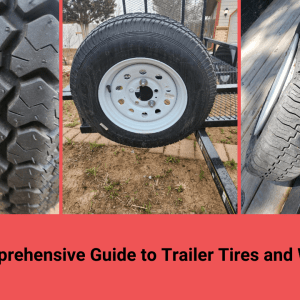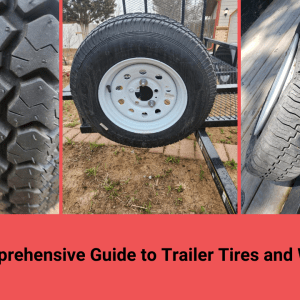Choosing the right wheel and tire combination is crucial for your vehicle’s performance, safety, and aesthetics. It’s not as simple as picking what looks good; you need to consider several factors. This guide will help you navigate the complexities. Let’s dive in!
It’s important to understand the terminology. Wheel diameter, width, offset, and bolt pattern are key. Tire size is expressed in a specific format. We will break it down.
Key Wheel Specifications
Diameter
The diameter is the size of the wheel from one end to the other; It is measured in inches. Matching the original diameter is often recommended. However, plus-sizing or minus-sizing can be done with careful consideration.
Width
Wheel width is the measurement of the wheel from one inner edge to the other. It is also measured in inches. The width affects tire fitment and handling characteristics. A wider wheel can accommodate a wider tire.
Offset
Offset is the distance from the wheel’s mounting surface to its centerline. It is measured in millimeters. A positive offset means the mounting surface is towards the outside of the wheel. A negative offset means it’s towards the inside. Incorrect offset can cause rubbing or suspension issues.
Bolt Pattern
The bolt pattern refers to the number and spacing of the wheel’s bolt holes. It must match your vehicle’s hub. Using the wrong bolt pattern is dangerous and will prevent the wheel from mounting correctly. Always double-check this specification.
Tip: Always consult your vehicle’s owner’s manual or a trusted tire professional to determine the correct wheel specifications for your car.
Decoding Tire Size
Tire size is typically represented by a series of numbers and letters, such as 225/45R17. Understanding what each part means is essential. It’s not as complicated as it looks!
- 225: Tire width in millimeters.
- 45: Aspect ratio (sidewall height as a percentage of the width).
- R: Radial construction.
- 17: Wheel diameter in inches.
The load index and speed rating are also important. The load index indicates the maximum weight the tire can carry. The speed rating indicates the maximum speed the tire can handle. Make sure these ratings meet or exceed your vehicle’s requirements.
Interesting Fact: The aspect ratio significantly impacts ride comfort and handling. Lower aspect ratios (e.g., 40 or 35) generally provide better handling but a harsher ride. Higher aspect ratios (e.g., 60 or 65) offer a more comfortable ride but less precise handling.
FAQ: Wheel and Tire Combinations
Q: Can I use a different size tire than what’s recommended?
A: Yes, but with caution. Changing tire sizes can affect speedometer accuracy, handling, and clearance. Consult a professional to ensure compatibility and safety. It’s a complex topic.
Q: What is “plus-sizing” and “minus-sizing”?
A: Plus-sizing involves increasing the wheel diameter and decreasing the tire’s aspect ratio to maintain a similar overall diameter. Minus-sizing is the opposite. Both can alter the vehicle’s appearance and performance. Consider the trade-offs.
Q: How do I know if a wheel will fit my car?
A: Check the wheel’s diameter, width, offset, and bolt pattern. Ensure they match your vehicle’s specifications. Test fitting is always recommended. Don’t guess!
Q: What happens if I use the wrong offset?
A: Incorrect offset can cause the tire to rub against the suspension or fender. It can also affect handling and wheel bearing life. It’s crucial to get the offset right. Avoid problems down the road.





